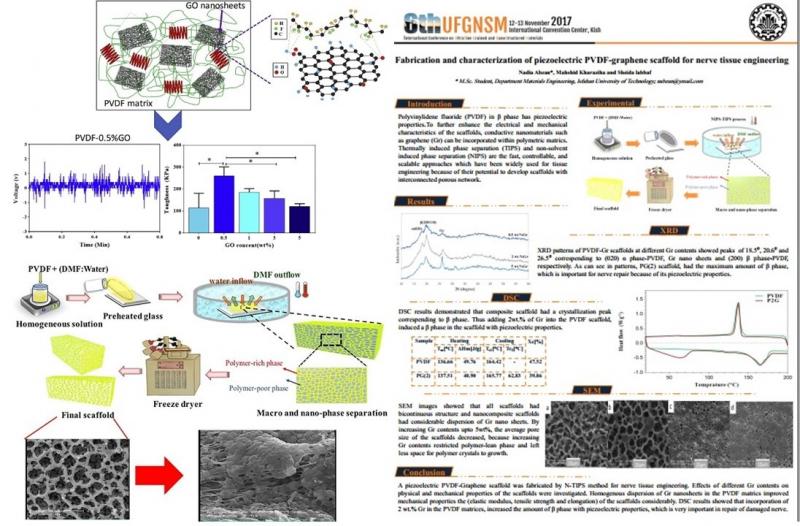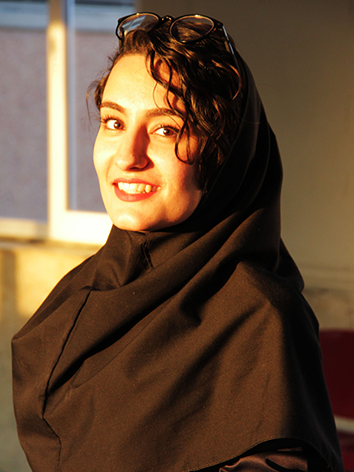- English
- فارسی
2015-Abzan.N.
 |
 |
Nadia Abzan
Email: nadia.abzan@gmail.com
- MSc, (2015-2018): Fabrication and Characterization of Piezoelectric Nerve guidance channel based on Polyvinylidene Fluoride-Graphene Oxide Nanocomposite via Phase Inversion process for Peripheral nerve repair
Abstract:
Peripheral nerve injury is a serious medical concern that results in partial or complete interruption of normal physiology of the nerve. Nerve guidance channels have been developed in order to find an alternative for nerve grafts. Physical guidance of neural fibers, appropriate mechanical, electrical and structural properties are the main challenges in conduit deign and fabrication and thus, improvement of nerve repair. The aim of this study is to fabricate piezoelectric nerve guidance channel with four internal channels based on polyvinylidenefluoride-graphene oxide nanocomposite. In this way, at first polyvinylidenefluoride scaffold was fabricate via phase separation method and effect of different processing parameters such as non-solvent incorporation (distilled water) in the solvent composition (N,N-dimethylformamide (DMF)), immersing time at coagulation bath (1, 3, 6 and 24 h) as well as coagulation bath temperature (-10, 0 and 20°C) and composition (DMF: water volume ratio= 2:6 and 6:4) on the mechanical, chemical, biological and morphological properties of the scaffolds were investigated. After optimization of the phase separation parameters, optimized scaffold in the terms of morphological, mechanical, chemical and biological properties was selected. Then, effect of different amounts of GO nanosheets (0, 0.5, 1, 3 and 5 wt%) on the properties of the optimized scaffold was investigated and final nanocomposite scaffold was selected. Finally, in order to improved physical guidance of neural fibers and thus improvement of nerve repair, a nerve guidance channel with 4 internal channels was fabricated by wrapping 2D scaffold around 4 copper wires. PVDF scaffold at water-free condition, immersed for 3 h at coagulation bath at composition of 6:4 and 20ºc, was selected as optimized scaffold in terms of structural, mechanical, chemical and biological properties and was used to continue the research. Characterization of PVDF-GO scaffold showed that incorporation of 3 wt% GO to the optimized PVDF scaffold, increased tensile strength, elastic modulus and toughness of the scaffold from 0.88±0.1 MPa, 9.4±2 MPa and 155.0±25 MPa at PVDF scaffold to 1.3±0.3 MPa, 17.1±4 MPa and 157.2±35 MPa at P-3GO scaffold. Incorporating 5w.t% GO in PVDF matrix, increased water absorption ability of scaffold from 217.5±59% at PVDF scaffold to 541.95.5±67% at nanocomposite scaffold. In addition, PC12 cell culture on PVDF-GO nanocomposites resulted in higher cell proliferation and growth on P-3GO scaffold because of its higher β phase fraction and piezoelectric properties. Accordingly, piezoelectric nerve guidance channel based on polyvinylidenefluoride-graphene oxide nanocomposite, with contorable structural, mechanical, chemical and biological properties is an appropriate candidate for damaged peripheral nerve repair.


